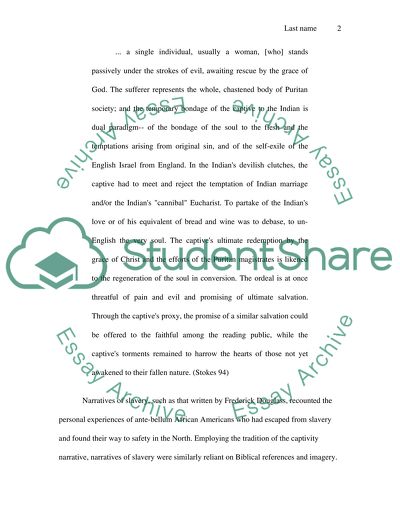Cite this document
(Captivity and Slave Narratives as Political Promotion Research Paper, n.d.)
Captivity and Slave Narratives as Political Promotion Research Paper. Retrieved from https://studentshare.org/literature/1572365-mary-rowlandson-captiviity-narrative-vs-douglas-slave-narrative
Captivity and Slave Narratives as Political Promotion Research Paper. Retrieved from https://studentshare.org/literature/1572365-mary-rowlandson-captiviity-narrative-vs-douglas-slave-narrative
(Captivity and Slave Narratives As Political Promotion Research Paper)
Captivity and Slave Narratives As Political Promotion Research Paper. https://studentshare.org/literature/1572365-mary-rowlandson-captiviity-narrative-vs-douglas-slave-narrative.
Captivity and Slave Narratives As Political Promotion Research Paper. https://studentshare.org/literature/1572365-mary-rowlandson-captiviity-narrative-vs-douglas-slave-narrative.
“Captivity and Slave Narratives As Political Promotion Research Paper”. https://studentshare.org/literature/1572365-mary-rowlandson-captiviity-narrative-vs-douglas-slave-narrative.


